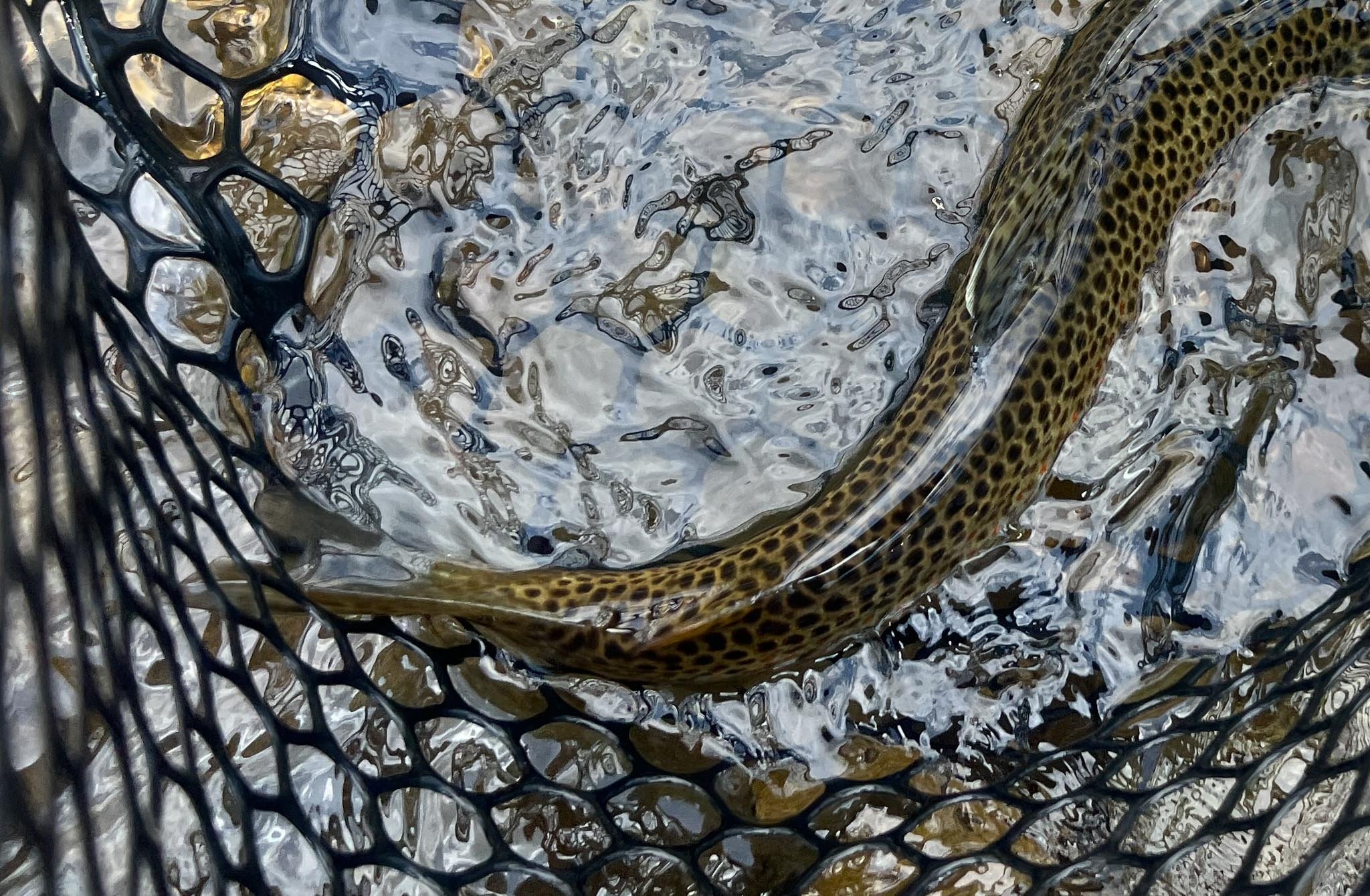Taylor River Fishing Report
Fishing is downright hot on the Taylor River River. Read on to learn how to catch ‘em.
The Taylor River has been holding at 294 CFS since the flows from the dam decreased this past Friday. Typically, stream flows out of the dam drop into their fall holding pattern around Labor Day weekend. With the Taylor Reservoir nearly full, we’re curious if this trend will come to fruition again this year.
Either way, fly fishing on the Taylor River has been exceptional as of late. We predict it will remain excellent for many weeks to come.
HELL YEAH!
Trout are located precisely where you think they’re located. They hang in the slack water, medium-slow riffles, and medium-speed deep runs. Find these areas of the river, and you’ll find fish.
For a more broad look at the current fishing conditions near Crested Butte, read our all-inclusive fishing report here.
There are several ways to catch a Taylor River trout right now. Here is our list of favorite tactics:
Heavy Indicator Rig: Fish the deepest holes with a heavy nymph rig dropped 4-6 feet below your indicator. We recommend using a bobber instead of a Dorsey or New Zealand Indicator for heavy rigs like this.
Fish two nymphs, approximately 16 inches apart, for the best presentations. Hares Ears, Pheasant Tails, Rainbow Perdigons, and PMD nymphs (all sizes 16-18) are fishing well. You’ll likely need weight in your system to get your nymphs deep, so consider slapping on a size 14 bead head caddis nymph as your point fly or use drop shot to get your flies where they need to be. Your point fly is the one at the terminal end of your system.
Nymph flies with a small hot spot near their collar have been working well. Pink, orange, and red hot spots are the favorite.
NOTE: With a heavy nymph rig, chances of tangles are higher than your 4th-grade teacher's pants. So, practice patience with your casting stroke for the best results.
(Sorry, Mrs. Ferguson)
Medium Weight Indicator Nymph Rig: Target the water 18-36 inches deep with this rig. This water should move at a medium-slow rate compared to the rest of the stream. Zones in the shade will often be better than runs in the sun.
Cast high enough into the run to let your nymphs sink into the prime-time strike zone. A smaller bobber or a Dorsey/New Zealand indicator will be best for this method.
Fly fishing on the Taylor River.
Drop a PMD-colored perdigon or a Frenchie-colored perdigon (both size 16) below the indicator by about 30 inches. Attach a CDC jig Caddis pattern (size 16) below that by about 12-14 inches. Swing your flies briefly (like, for 1 second) at the end of your drift to imitate an emerging fly. This motion will sometimes result in an eager trout on the hook.
Remember, it’s the motion of the ocean that brings all the trout to the yard. Or something like that.
You shouldn’t need to add any weight to this rig, but if you’re not catching fish, try dropping the nymphs deeper, fish shallower water, or add some drop shot.
Light Dry-Dropper Rig: The dry-dropper rig is a versatile fly fishing tactic for the Taylor River. However, there are many great ways to catch fish, and it should only be used if there’s legitimate evidence fish will feed on the surface AND sub-surface. Or if you’re a master Jedi with your casts and drifts. So, inspect the water before setting up this rig.
Observe the size/shape of flying insects to mimic. Examine the water surface, looking for trout feeding on top or 6-8 inches below the surface.
A size 12 Crystal Stimulator is our favorite choice for a dry fly. Slather that with some floatant and drop a size-16 unweighted pheasant tail 12-16 inches behind the dry. A BWO nymph pattern could also work, especially on a cloudy, cool day. The nymph fly should drift subsurface but only 6-10 inches below the dry fly.
Use your uber-focused Superman X-ray vision to watch for any subsurface takes. The nymph will act as an emerger pattern, and fish often will eat it gently.
Where To Fish On The Taylor River?
The popular Catch-and-Release (C&R) section below the dam will often result in the largest fish and the largest crowds. Yes, trophy fish can be caught there, but we avoid it most of the time due to the shoulder-to-shoulder combat fishing. Our favorite time to fish the Taylor is in November or March when the chumps have dispersed.
If you choose to fish at the C&R, we recommend sizing down on your nymphs and throwing some midges into the mix. Size 18-24 nymphs are on the menu at the C&R. And remember to whisper like you’re in a library because you’ll be fishing with two dozen other people.
Directly below the C&R are several miles of private water. Please don’t trespass here, although it looks oh-so sexy. You’ll know it’s private land because of a silly long fence the landowner installed along miles of this pristine riverbank. Perhaps a simple sign would have been better?
Oh well.
Below this, there are several access points to public water all the way to Almont, with a few private stretches mixed in. It’s here you will find fewer crowds and equally rewarding fishing conditions.
Download the OnX app and pay for the annual subscription for all the information you need when in doubt about public/private land boundaries. We rely on OnX all of the time.
Have fun out there, and remember that it’s only fishing :)
Dan
This is our dog, Burt. And he approves this message.
Photo taken on September 1, 2023.



